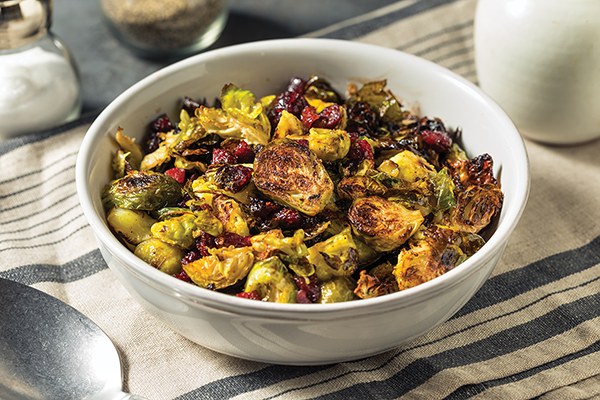1. Chop your cabbage in half, then into quarters, then cut each quarter into fourths.
2. Chop your Daikon radish into matchstick-like pieces; set aside with the shredded carrots.
3. Fill a large pot three-fourths of the way with
cool water. Add 1/2 cup of pickling salt to the
water, then add all of the cabbage to the water and allow to sit for at least an hour. If you’re worried about all of this salt, don’t be. You’ll rinse the cabbage later. This salt is for drawing as much water out of the cabbage as possible.
4. While waiting for the cabbage to soak, make your chili paste. Add the yellow onion, garlic cloves, apple, ginger, and fish sauce to a food processor and blend until smooth. Transfer this mixture to a bowl and add 1⁄2 cup of the Korean pepper flakes and the chopped scallions. Mix until ingredients are fully incorporated.
5. **Optional step: Many traditional kimchi recipes require the preparation of a rice paste, comprising 11⁄2 tablespoons of glutinous rice flour dissolved in 1⁄2 cup of cool water, then warmed until thick, after which you’ll add 1 tbsp of sugar. If you choose to make this, combine the rice paste with the chili paste after the rice paste has cooled completely. While this step can aid the chili paste in sticking to the vegetables, the kimchi will turn out very nicely even if you decide to skip this step.
6. After your chili paste is prepared and the cabbage has
been soaking for at least an hour, strain the water from the cabbage. Rinse the cabbage well, picking up handfuls and squeezing the water from the leaves until the cabbage is slightly shriveled. Rinse the cabbage several times. You can try a few pieces to make sure that it isn’t too salty. If it is, continue rinsing until desired saltiness is achieved. After rinsing, let
the cabbage sit for about 15 more minutes to fully drain, then blot with a paper towel to get the cabbage as dry as
possible.
7. Place the cabbage in a large bowl or back into the pot
you used to soak it (which should now be empty). Add the carrots and daikon to the pot. Add the chili paste to the pot, and, while wearing gloves, massage the paste into the vegetables until all of the vegetables are coated in the paste. Avoid touching your eyes or face during this step, as the chili paste is spicy.
8. Slowly add the mixture to your large glass jar. As you add each handful of kimchi, press the mixture down to avoid any air pockets from forming. The mixture should be tightly packed into the jar once you’re finished.
9. Loosely top the jar with the lid, leaving it open slightly so as to allow the fermenting gasses to escape. Otherwise, the jar could explode or crack.
10. Put the jar on a plate to catch the spicy kimchi juice that will escape from and run down the jar as the kimchi ferments. Store the jar at room temperature (65 to 80 degrees) for 1 to 5 days. The hotter the room is, the faster the kimchi tends to ferment. A great place to store your jar is a large plastic cooler, because it will keep the kimchi in a cool, dark place out of the way and you can clean the cooler once you’re finished. Use a fork or chopsticks to sample the kimchi at least once per day until the desired level of tanginess is achieved. Also, use a utensil to press the kimchi down once per day to ensure it remains tightly packed and all of the vegetables remain covered in the kimchi brine. The kimchi will smell tangy and pungent and will produce visible bubbles as it ferments.
11. Once the kimchi has reached a tanginess of your liking, move it to the fridge. It will stay good for at least a month and up to three months, but it will continue to ferment slowly in the fridge and the flavor will change over time. You can add kimchi to rice, eggs, salads, soups, sandwiches, burgers, or any other dish you’d like to infuse with a tangy, spicy flavor. Enjoy!






